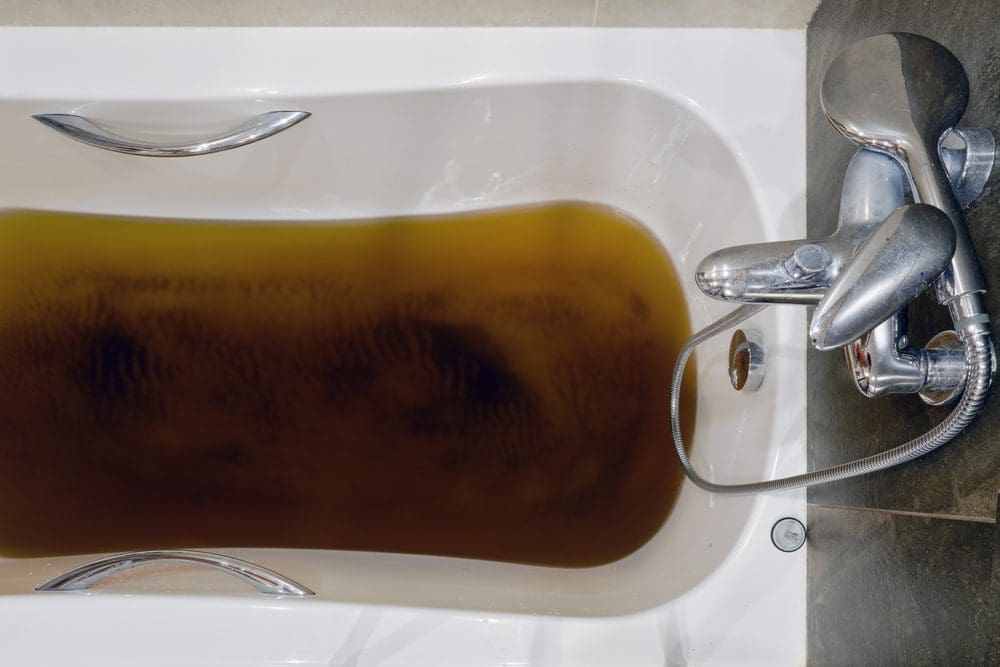Unraveling the Causes of Drainage in the Bathtub
Unraveling the Causes of Drainage in the Bathtub
Blog Article
What're your thoughts regarding Why is Sewage Backing Up Into My Bathtub??

Sewage backup in the bathtub can be a traumatic and unhygienic issue for any type of homeowner. Not just is it troublesome, however it also positions serious health dangers and suggests underlying concerns with the plumbing system. Comprehending why sewer is turning up via the tub is essential for taking appropriate action to resolve the problem effectively.
Introduction to the Concern
Recognizing the Problem
When sewer draws back up into the bath tub, it's a clear sign of a problem with the drain system. The wastewater that ought to be moving far from your home is rather discovering its back into your space, which can result in considerable damages and carcinogen.
Possible Causes
Several factors can add to sewage back-up in the tub. From clogs in the sewage system line to problems with the plumbing facilities, identifying the source is crucial for discovering a service.
Usual Reasons for Sewage Back-up
Clogs in the Sewer Line
One of the most typical causes of sewage back-up is a blockage in the sewer line. This can happen because of the buildup of particles, oil, or foreign items in the pipes, preventing correct circulation and creating sewage to support into your bath tub.
Tree Origin Breach
Tree roots seeking moisture and nutrients can penetrate drain lines through tiny fractures or joints. Gradually, these origins can grow and increase, triggering significant damages to the pipelines and causing sewer backup problems.
Aging Framework
Older homes may have dated plumbing systems that are extra prone to rust, cracks, and damage. As pipes age, they become much more prone to leaks and obstructions, increasing the chance of sewer back-up cases.
Heavy Rainfall or Flooding
During periods of heavy rainfall or flooding, the drain system may come to be overwhelmed with excess water, causing back-ups and overflows. This can cause sewer supporting into bathtubs and various other fixtures inside the home.
Health And Wellness Dangers Connected With Sewer Backup
Contamination of Water System
Sewage back-up can contaminate the supply of water in your home, posturing a significant health threat to you and your household. Direct exposure to contaminated water can cause gastrointestinal issues, skin infections, and other ailments.
Spread of Disease
Sewage consists of damaging microorganisms, infections, and parasites that can trigger a variety of illness, including hepatitis, cholera, and gastroenteritis. Entering into contact with sewage or contaminated surfaces places you at risk of infection.
Mold and mildew Growth
Dampness from sewage back-up can create suitable conditions for mold growth in your home. Mold and mildew spores can aggravate breathing troubles and trigger allergies in sensitive individuals, making punctual cleaning crucial.
Indications of Sewer Back-up
Foul Odors
Undesirable smells originating from drains pipes or components, especially in the shower room, might show sewer back-up concerns. These smells are commonly strong and relentless, signifying a problem that requires immediate focus.
Slow Draining Fixtures
Bath tubs, sinks, and bathrooms that drain slowly or not at all could be experiencing sewage back-up. If multiple components are impacted all at once, it's likely that the issue originates from a common point, such as the main drain line.
Gurgling Sounds
Unusual gurgling or bubbling noises originating from drains pipes when water is running somewhere else in the house are a sign of air entraped in the plumbing system. This air buildup can result from sewage backup and ought to be explored quickly.
Immediate Actions to Take
Switching Off Supply Of Water
In the event of sewage backup, it's necessary to turn off the water system to prevent more contamination and damages. Situate the main water shutoff valve in your home and closed it off up until the problem can be fixed.
Speaking To a Professional Plumber
Taking care of sewage backup is not a DIY job. Contact a certified plumber with experience in dealing with sewage-related concerns to examine the circumstance and perform needed repair services or cleanups.
Preventing Contact with Infected Water
Till the sewage backup is settled, prevent contact with polluted water to avoid the spread of microorganisms and microorganisms. Put on safety equipment if you have to remain in the damaged area and clean your hands thoroughly later.
Safety nets
Routine Maintenance of Sewer Lines
Set up normal assessments and maintenance of your sewer lines to recognize and attend to prospective concerns before they intensify right into significant issues. This can include cleaning out particles, inspecting for tree root intrusion, and repairing any type of broken pipelines.
Setting Up Bayou Shutoffs
Think about mounting bayou valves in your plumbing system to stop sewer from receding right into your home throughout periods of heavy rainfall or flooding. These valves immediately close when water draws back up, protecting your residential or commercial property from contamination.
Correct Disposal of House Waste
Stay clear of purging anything other than bathroom tissue and human waste down the commode to avoid obstructions and blockages in the sewer line. Dispose of oil, oil, and other family chemicals correctly to decrease the risk of plumbing problems.
Tidying up After Sewer Backup
Disinfection Procedures
Thoroughly disinfect and disinfect influenced areas after sewage back-up to eliminate dangerous germs and prevent mold growth. Use proper cleansing products and protective equipment to guarantee secure and reliable cleaning.
Remediation of Affected Locations
Repair any type of damage to flooring, wall surfaces, or fixtures triggered by sewage back-up. Relying on the degree of the damages, you might require to change carpets, drywall, or various other products to restore your home to its pre-loss condition.
Why Is Water Backing Up in My Bathtub When I Flush My Toilet?
What to do about a sewer line clog
First, don’t bother with plunging. No amount of plunging will dislodge the clog in a sewer line. The clog is too far away. Plungers are for clogs in the toilet itself, not the sewer line. Plus, the most likely causes of a sewer clog are:
Tree roots Flushed toys or feminine products Grease buildup Those items don’t move easily. And in the case of tree roots, the roots need to be cut out of the pipe and the pipe will need to be repaired.
You’ll need a closet auger. A closet auger is a type of plumber’s snake with a protective cover to keep from scratching the delicate porcelain toilet. If the clog is further down, you may need to remove the toilet or use one of your cleanouts to get to the clog.
We also recommend doing a video inspection of the drain to ensure that the cause of the clog has been completely removed. Otherwise, you could have the same problem again in a few days or weeks.
https://mspplumbingheatingair.com/blog/why-is-water-backing-up-in-my-bathtub-when-i-flush-my-toilet

I ran across that blog post about Why is Sewage Backing Up Into My Bathtub? when doing research the web. So long as you liked our post if you please remember to share it. Kudos for being here. Don't hesitate to check up our website back soon.
Click Here
Report this page